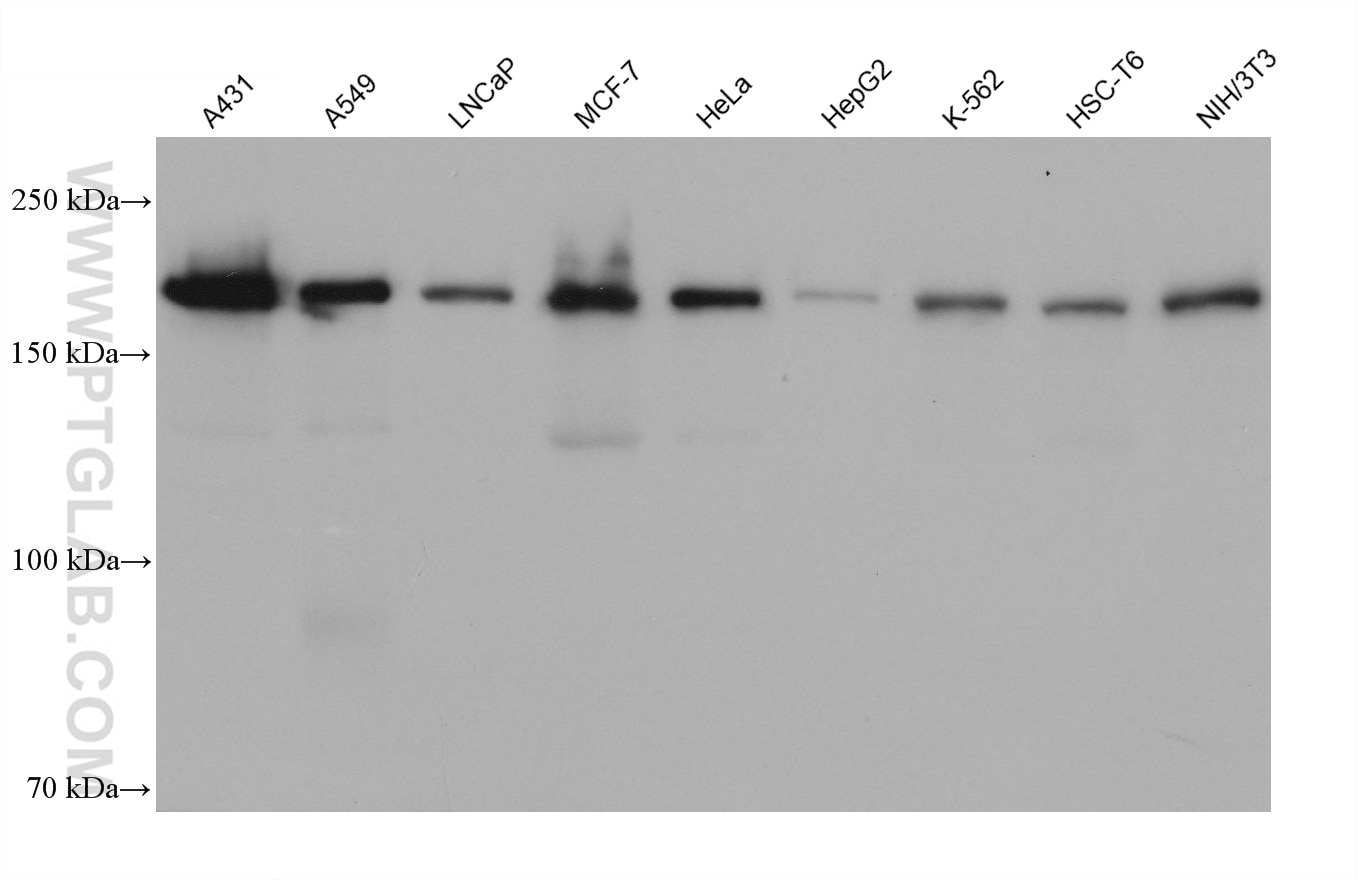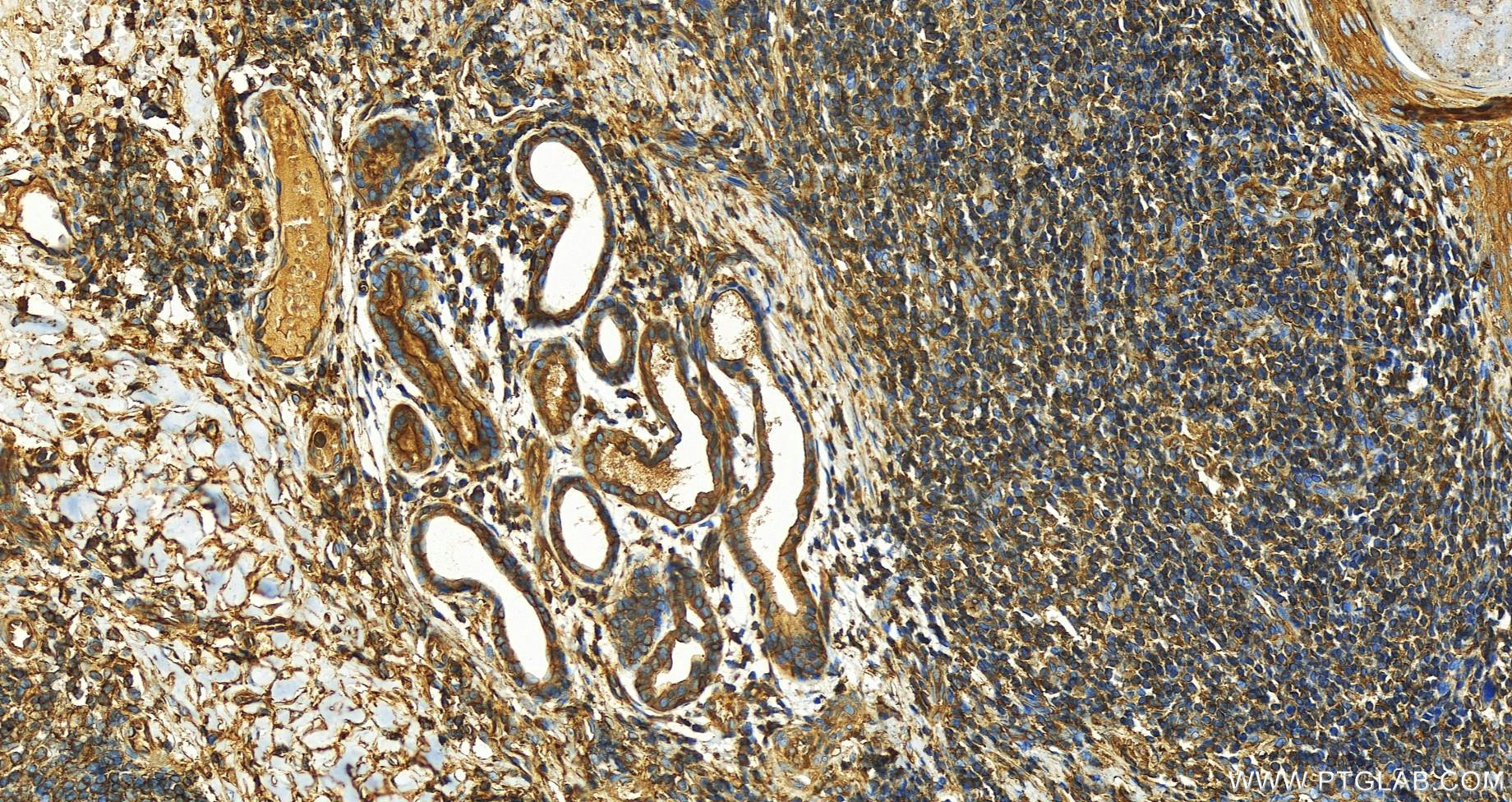Validation Data Gallery
Tested Applications
Recommended dilution
| Application | Dilution |
|---|---|
| It is recommended that this reagent should be titrated in each testing system to obtain optimal results. | |
Product Information
68588-1-PBS targets IQGAP1 in WB, IHC, ELISA applications and shows reactivity with human, rat samples.
| Tested Reactivity | human, rat |
| Host / Isotype | Mouse / IgG2a |
| Class | Monoclonal |
| Type | Antibody |
| Immunogen | IQGAP1 fusion protein Ag19321 相同性解析による交差性が予測される生物種 |
| Full Name | IQ motif containing GTPase activating protein 1 |
| Calculated molecular weight | 189 kDa |
| Observed molecular weight | 190-195 kDa |
| GenBank accession number | BC151834 |
| Gene Symbol | IQGAP1 |
| Gene ID (NCBI) | 8826 |
| ENSEMBL Gene ID | ENSG00000140575 |
| Conjugate | Unconjugated |
| Form | Liquid |
| Purification Method | Protein A purification |
| UNIPROT ID | P46940 |
| Storage Buffer | PBS only , pH 7.3 |
| Storage Conditions | Store at -80°C. |
Background Information
IQGAP1 is a member of a family of scaffolding proteins that interact with signaling and structural molecules. It localizes to sites of cell-cell contact in epithelial cells and regulates distinct cellular processes including cell adhesion, cell migration, extracellular signals through interacting with numerous protein. Multiple studies have shown that IQGAP1 is up-regulated in many human malignancies, such as lung cancer, ovarian cancer, colon cancer, breast cancer, melanoma and HCC. And IQGAP1 plays a critical role in cancer cell invasion.

